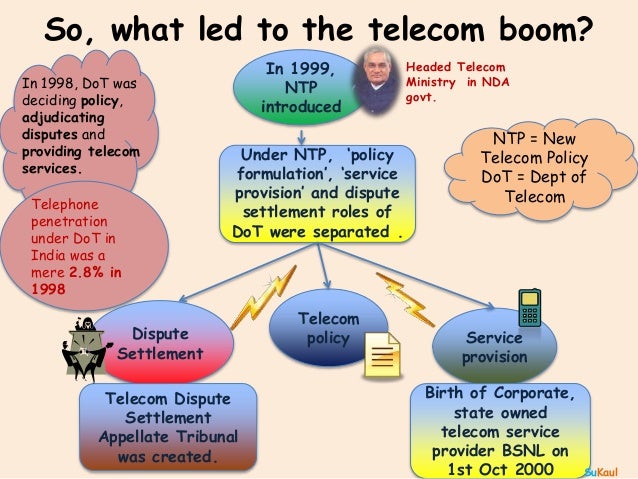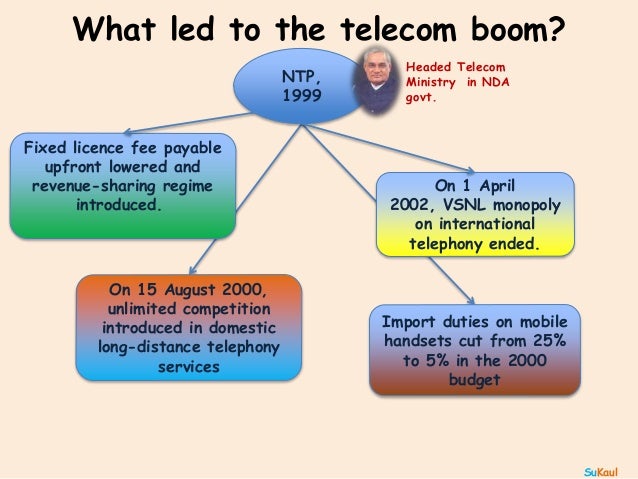The formal sector generated 26.8 million jobs till 1991 and
by 2012 it had improved the number by just 2.8 million to 29.6 million.
This shocking data was no secret.
- Year after year, the Economic Survey had printed this
data in the Statistical Appendices attached to it and the RBI had reported
this every year in Table 14 of its Hand Book of Statistics on the Indian
economy. But not many looked at the data to get the message it explicitly
conveyed, namely that the organised sector can’t employ India.
Who else employs India?
- The
answer to this contained in the data provided by the surveys of the
National Sample Survey Organisation [NSSO].
- The
NSSO has been reporting in its Economic Census every 10 years that it is
the non-corporate sector-- derogatorily as informal
sector by economists-- which keeps India employed and
sustaining its economic, even public, order.
Its
latest Economic Census [2014] says that some 57.8 million small and micro [most
of them unregistered and largely self-employment concerns] provide 128 million
jobs. This does not include the construction sector or all limbs of the
unorganised sector.
- The
entire unorganised sector put together provide over 460 million jobs.
- Take
the 57.8 million small businesses. Their asset base is `11.4 lakh
cr.
- But
annual value addition is `6.28 lakh cr -- that is over 55 per cent.
- But
the value addition by Indian corporate sector-- the crown jewel of our
economy--is about 34 per cent of their gross assets.
While
the organised sector, that provides just a tenth of the non-farm jobs in the
country, has almost monopolised the organised capital supply, domestic and foreign,
the 57.8 million micro and small businesses that provide 128 million jobs has
got only 4 per cent of
its capital needs from organised institutions!
Who owns and operates the millions of micro units?
- Almost
two thirds of them belong to the Scheduled Castes, Scheduled Tribes and
Other Backward Castes.
- More
than half of these units operate from rural areas, where it is
difficult to deliver economic growth.
- More
than a third of them are engaged in manufacturing. About a third of them
in trade. The rest in different services.
- Where
do they get their finances which is the life-line of businesses.
- It
is from extortionate money lenders, who charge usurious rates ranging from
36 per cent to 365 per cent depending on the type of borrower.
- This
has been the status of this Kamadhenu of employment creation in India.
Birth of MUDRA
- When
Narendra Modi took over the nearly ruined economy from the UPA, which
had celebrated jobless growth, someone must have brought this
telling data of the highly funded corporates which have failed to deliver
on jobs and the unfunded non-corporates which have provided most of
the jobs in India.
- Modi
must have immediately recognised the urgent and the unattended financial
needs of these unfunded millions of micro units.
- In
the Budget the new government presented in July last, the idea of creating
a financial architecture for funding these micro business units was seeded
in para 102 of the Budget speech and a Committee was constituted for the
purpose.
The Committee submitted the report days before the 2015-16
Budget. But it rejected a suggestion to create a separate development and
regulatory bank like the National Housing Bank to register and regulate and
arrange wholesale finance to provide retail finance for the unfunded
micro businesses and also appraise, register, regulate and refinance the
existing small finance providers after due appraisal and make them Last Mile Financiers. The Committee rejected these suggestions saying that
the Reserve Bank of India had opposed it as theoretically a risk-prone idea.
Normally this would be sufficient to close the file.
- But
Narendra Modi would not close the file. Because he was perhaps convinced
that the existing financial institutions would not fund these unfunded
micro businesses which he must have understood as the backbone of job
creation in India.
- Modi
shredded the Committee report and went ahead with what he thought would
work in and for India.
- The
result is the birth of MUDRA Bank idea in the Budget 2015-16.
- Backgrounding
the MUDRA bank, the Finance Minsiter emphasised “inclusive growth” has to
come from only the non-formal sector, without saying the corporate sector
cannot do it.

Referring how the unfunded non-formal sector, largely operated by
the economically weaker communities, provides the maximum employment and
pointed out how they are unfunded, he proposed the MUDRA Bank for funding the
unfunded businesses.
The MUDRA Bank has theoretical depth and practical
wisdom.
- In
July 2013, a study titled ‘India’s better half: the informal economy’ by
the Credit Suisse Asia Pacific Equity Division on the non-formal sector in
India told the world that nine out of 10 jobs in India and half of its GDP
originated in the non-formal sector including the 57.7 million micro
businesses.
- The
study reduced the status of the corporates in the Indian economy as the “tail cannot wag the dog”. The
sheer size of the non-formal business in India obviously persuaded
even
- The
Economist magazine to see the reality and to say that the best way to organise the non-formal sector in
India was to provide formal finance to it.
MUDRA Idea
Potential Game Changer
The Press Brief of the Ministry of Finance Department of Financial
Services on MUDRA brings out how it is a Made in India idea for funding
micro businesses. As a bank to be established under a new law, MUDRA will
register, regulate and refinance all small business finance institutions.
- It
will partner state level and regional level coordinators to enable them to
provide refinance to Last Mile Financiers [LMFs] of micro
businesses.
- The
inclusion of the local LMFs is a very innovative idea. And a
potential game changer.
- The
MUDRA idea realises that only the LMFs can have local knowledge and of the
borrowers’ character and worth and seeks to formalise their involvement in
credit distribution to micro businesses. A real innovation indeed.
- MUDRA
will Register small financiers of micro businesses. Regulate them.
Accredit them. Rate them. Fix responsible financial practices,
client protection principles and methods of recovery.
- Formulate
and run credit guarantee schemes for credit extended to micro
businesses.
- Integrating the
LMFS to deliver credit to micro businesses is entirely an indigenous idea.
An ingenious too. If LMFs are evaluated, appraised, registered and given
refinance at lower rates, the ultimate interest rate for micro businesses
would be far lower.
The innovative bank has
four unique features.
One,
- It is structured as an apex
refinancer to enable over 50 million unfunded entrepreneurs to access
formal credit from and through layers of credit institutions registered
under it.
- The micro entrepreneurs not only
earn their livelihood but also provide jobs to others.
- They need credit at reasonable
interest, not doles or subsidies with which, sadly, the idea of inclusive
growth has come to be associated.
Two,
- MUDRA will fund
the micro units which are more efficient than modern corporates.
- According to the
Economic Census 2014, the gross fixed assets of the 5.77 crore small
businesses is about Rs.11.5 lakh crore.
- But their value
addition is Rs. 6.26 lakh crore — almost 55 per cent of their gross fixed
assets. But the comparative figure for Indian corporates, according to
Reserve Bank of India data, is 34 per cent.
- While corporates
pay interest at 9 to 14 per cent, micro units pay at least ten times more.
Despite that, micro units add 60 per cent more value on their assets than
corporates do. And more.
The Economic Census 2014 says that while the 57.7 million micro
units provide 128 million jobs, banks fund only 4 per cent of their needs —
just Rs. 46,000 crore out of their gross assets of Rs. 11.5 lakh crore.
- Modern
corporates in the public and private sector have absorbed over Rs. 50 lakh
crore through FDI and FII investments and bank credit since 1991, but
added just 2.8 million jobs. Yes, just about a lakh of jobs per
year for 21 years. Is the corporate sector driving the national
economy or the non-corporate sector?
Three,
- The MUDRA Bank concept rests on theoretical depth and practical wisdom. It challenges the experts who thought that micro businesses and marginal farming would face eventual euthanasia. Why then worry about them, they felt. An economist who had headed the Planning Commission for a decade had even said that the jobs generated by the micro units were not clean.
- Over 70 per cent
of the micro businesses are unregistered. This also justified our experts
shutting their eyes to them. But the MUDRA concept looks at micro
businesses differently. It sees micro businesses as an open air university
for mass entrepreneurship development and growth. It believes that the
best way to register them into the national economic records is to provide
organised financing to them.
Lastly,
- The
MUDRA architecture is indigenously designed to fund the uniquely Indian
non-formal sector. The press brief of the finance ministry’s department of
financial services on MUDRA issued on the day of the Budget explains its
structure.
- It
will be a bank established under a new law. It will register, regulate and
refinance all small business finance institutions including those already
in the business. It will partner with State level and regional level
coordinators to enable them to provide finance to last mile financiers
(LMFs) of micro businesses.
- The
MUDRA bank will be at the top with national, State and regional level
coordinators in the middle and the LMFs at the end.



